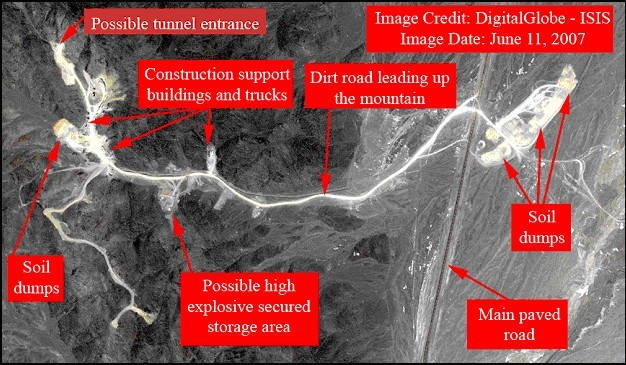Iran can Make Uranium for Nuclear Bomb in Just One Month - Report
Tehran's nuclear breakout times are 'currently too short and shortening further'

The Iranian nuclear juggernaut is rolling on relentlessly, and is in fact gaining pace, with the estimated breakout time for Tehran to produce enough weapons-grade uranium for a nuclear bomb shortening to as little as one month, a new report shows.
Under the most ideal situations, Iran could produce a significant quantity of weapons-grade uranium in "as little as approximately 1.0 -1.6 months", the Washington-based non-proliferation group Institute for Science and International Security said in its latest report.
This projection is based on the estimate that Iran is able to use all of its near 20% low enriched uranium stockpile for the production of weapons-grade uranium.
The report analyses various scenarios under which Iran can produce one significant quantity of weapons-grade uranium, which is calculated as 25 kg, based on the latest data related to the country's uranium stockpiles and its progress in developing advanced centrifuges.
The institute says that since its previous report in 2012, Iran has steadily expanded the number of IR-1 centrifuges installed at both its Fordow and Natanz gas centrifuge plants and has started installing its more advanced centrifuge model, the IR-2m centrifuge, at the Natanz Fuel Enrichment Plant.
If Iran has developed covert plants for the enrichment, it could break out of the nuclear non-proliferation treaty faster, the report warns. "In the ideal scenario with optimised cascade structure and very good centrifuge performance, it is possible that Iran could use a covert plant to break out in as little as approximately one to two weeks."
Iran's potential covert operations offer a bigger security risk inasmuch as it further shortens the time between producing enough weapons-grade uranium and making an actual nuclear bomb, the institute says.
Even after producing enough weapons-grade uranium, Iran would need further time to make weapons components and build a reliable warhead for a ballistic missile, but these preparations would most likely be conducted at secret sites and would be difficult to detect.
"If Iran successfully produced enough WGU for a nuclear weapon, the ensuing weaponisation process might not be detectable until Iran tested its nuclear device underground or otherwise revealed its acquisition of nuclear weapons."
Negotiation
The shortening breakout times have implications for any negotiation with Iran, the report warns.
It says the breakout times are "currently too short and shortening further", and the negotiations with Iran should focus on lengthening the breakout times, shortening the time to detect breakout, and gaining assurance that a secret centrifuge plant is unlikely to be built or finished.
© Copyright IBTimes 2025. All rights reserved.






















